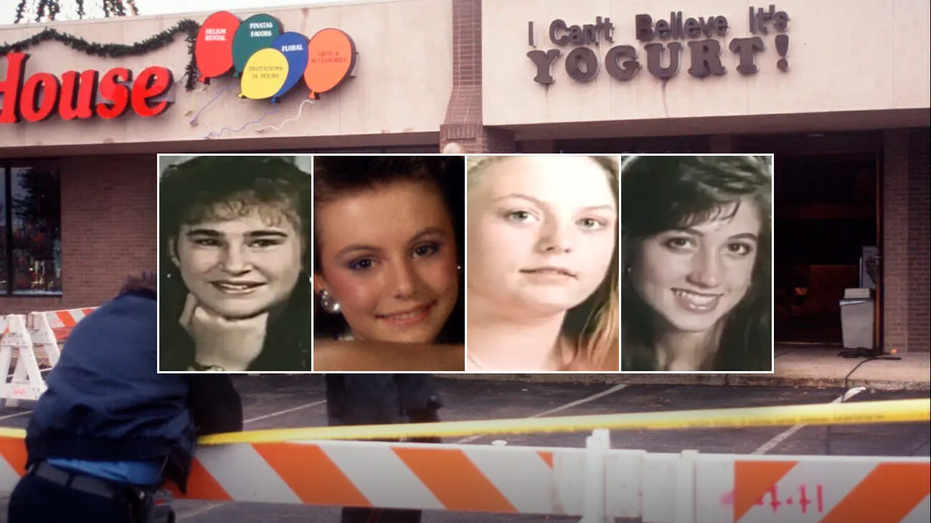New DNA and ballistics testing have linked a serial killer to the 1991 “Yogurt Shop Murders,” solving a case that has haunted Austin, Texas, for more than three decades.
During a news conference on Monday, the Austin Police Department announced that genetic evidence linked Robert Eugene Brashers to the killing of four teenage girls inside a North Austin yogurt shop.
“After 34 years, the Austin Police have made a significant breakthrough in one of the most devastating cases in our city’s history,” said Austin Police Chief Lisa Davis. “This unthinkable crime has weighed heavily on the hearts of our community, the families of the victims and our detectives who have tirelessly pursued justice.”
DNA EVIDENCE CRACKS COLD CASE, CONNECTS DEAD SUSPECT TO MURDERS OF 4 TEENS AT AUSTIN YOGURT SHOP
Investigators say a major breakthrough in the case came in recent weeks, when advanced testing revealed that DNA found beneath 13-year-old Amy Ayers’ fingernails matched that of Brashers — a man previously connected to homicides in both Missouri and South Carolina.
“I have never been so proud of my daughter in all of my life,” her father, Bob Ayers, told the Austin American-Statesman. Authorities believe Ayers managed to gather the DNA during a desperate struggle with her attacker.
“Our whole family knew there was something about Amy that would help solve this,” Ayers said.
He added, “This is over.”
FOLLOW THE FOX TRUE CRIME TEAM ON X
Brashers, who died by suicide during a 1999 standoff with Missouri police, had already been tied to a string of violent crimes across the country.
In 2018, officials in Missouri announced that DNA evidence connected Brashers to the 1990 strangulation of a woman in South Carolina, as well as the 1998 shootings of a mother and daughter in Missouri. He was also linked to the 1997 rape of a 14-year-old girl in Tennessee.
‘YOGURT SHOP MURDERS’: AUSTIN’S UNSOLVED COLD CASE CONTINUES TO RAISE QUESTIONS DECADES LATER
Then, in June, Jackson resubmitted ballistics data from a .380 caliber shell casing recovered at the yogurt shop to a federal database. The results matched an unsolved 1998 case in Kentucky. While Jackson declined to share details about the Kentucky case, he noted that it bore similarities to the Austin murders.
In August, South Carolina investigators informed Austin detectives that new DNA testing on a sample from under Amy Ayers’ fingernail matched Brashers — confirming his connection to the 1990 South Carolina murder.
“Amy’s final moments on this Earth were to solve this case for us,” Jackson told The Courier of Montgomery County. “It’s because of her fighting back.”
Police are still piecing together why Brashers was in Austin the night of the murders, but noted he was stopped near El Paso just two days later. He told police he was driving a stolen truck from Georgia to visit his father in Arizona.
A .380 caliber handgun found on Brashers during that stop was confiscated by police but later returned to his father — who may have given it back to him. Jackson said it was the same make and model Brashers used when he died by suicide during a 1999 standoff with Missouri police.
SIGN UP TO GET THE TRUE CRIME NEWSLETTER
On Dec. 6, 1991, firefighters responding to a fire at the I Can’t Believe It’s Yogurt store made a horrifying discovery: the bodies of Eliza Thomas, 17; sisters Jennifer, 17, and Sarah Harbison, 15; and Sarah’s best friend Amy Ayers, 13.
All had been shot in the head. Authorities believe the girls were bound, that some were sexually assaulted, and that the fire was intentionally set to destroy evidence.
The investigation faced major hurdles early on, as fire and water damage compromised much of the physical evidence. Thousands of tips poured in, but most led nowhere and no suspect was ever conclusively tied to the crime. The case eventually went cold.
For the families, decades of uncertainty became its own form of torture. Pam Ayers, Amy’s mother, told the Statesman that she is still trying to process the new revelations.
GET REAL-TIME UPDATES DIRECTLY ON THE TRUE CRIME HUB
“I can’t say I am happy,” she said. “I’m not there. I am kind of numb. Knowing it is a serial killer, I am not sure that makes it worse, but I would have never thought it would be a serial killer. That is hard for me to process.”
While Brashers is long deceased, police say the investigation is ongoing. Detectives are working with agencies in other states to trace his movements and determine whether he is connected to additional unsolved crimes.
Austin Mayor Kirk Watson said he hopes the breakthrough may help the city move forward.
“My hopefulness is that we can turn a page as a community and hopefully the final page on this horror that marked a very different time in Austin’s history,” Watson said. “We can take heart in our growth and progress and strength as a city. And we can go to sleep knowing that while the threat of this kind of evil may never pass in this world, we are far, far better able to prevent it before it happens and solve it when it does.”
Authorities are urging anyone with information about Brashers to come forward.
The Associated Press contributed to this report.
























